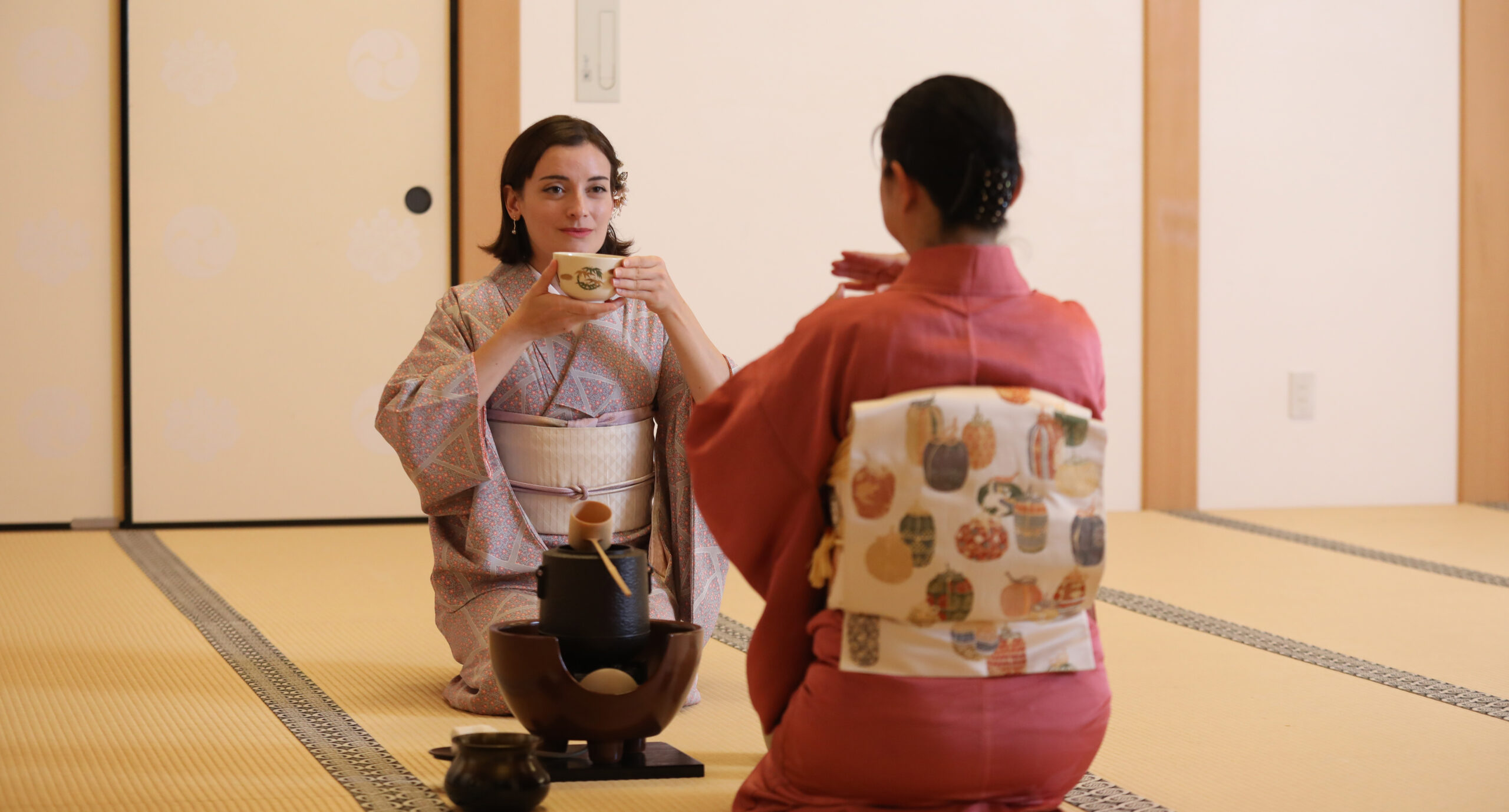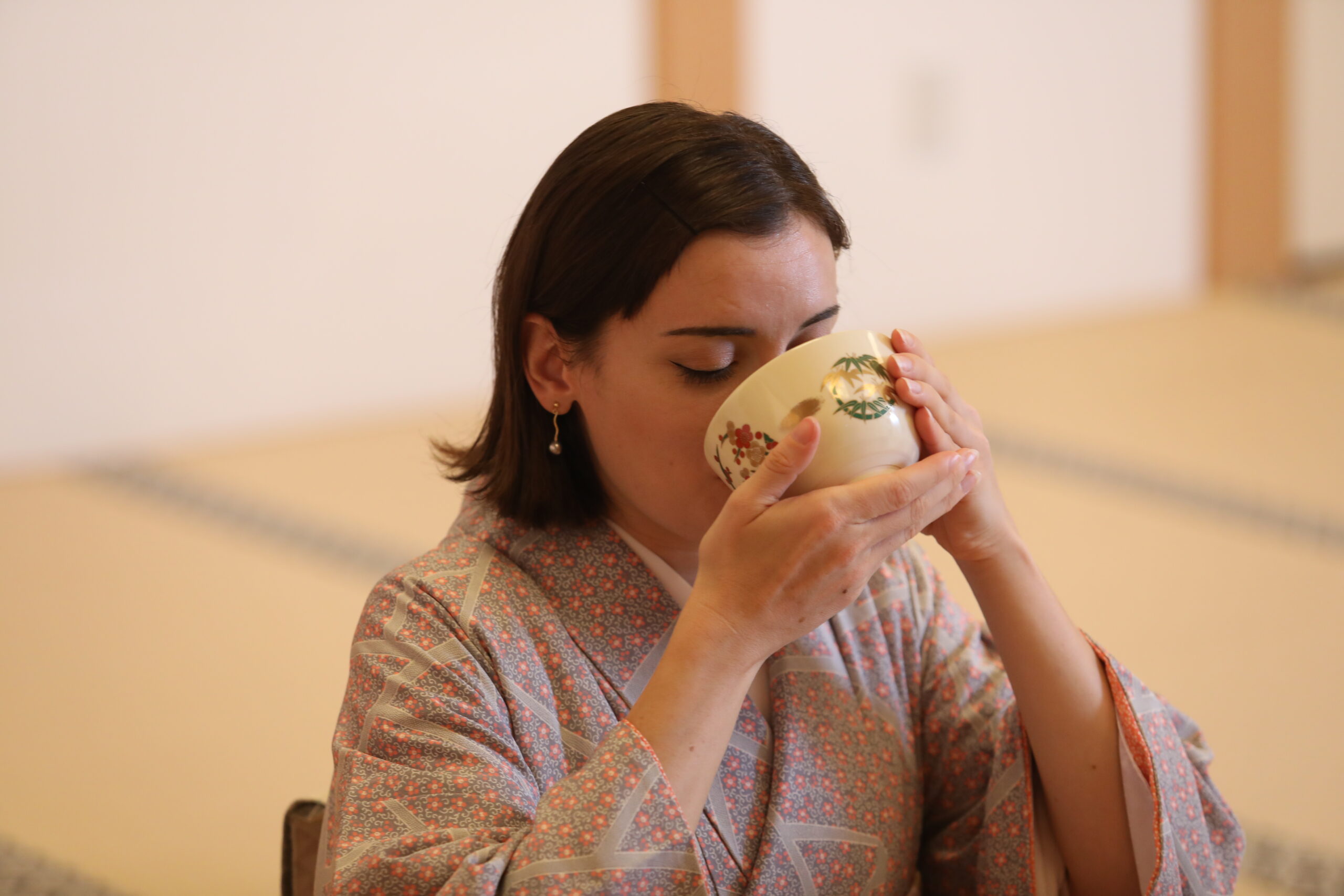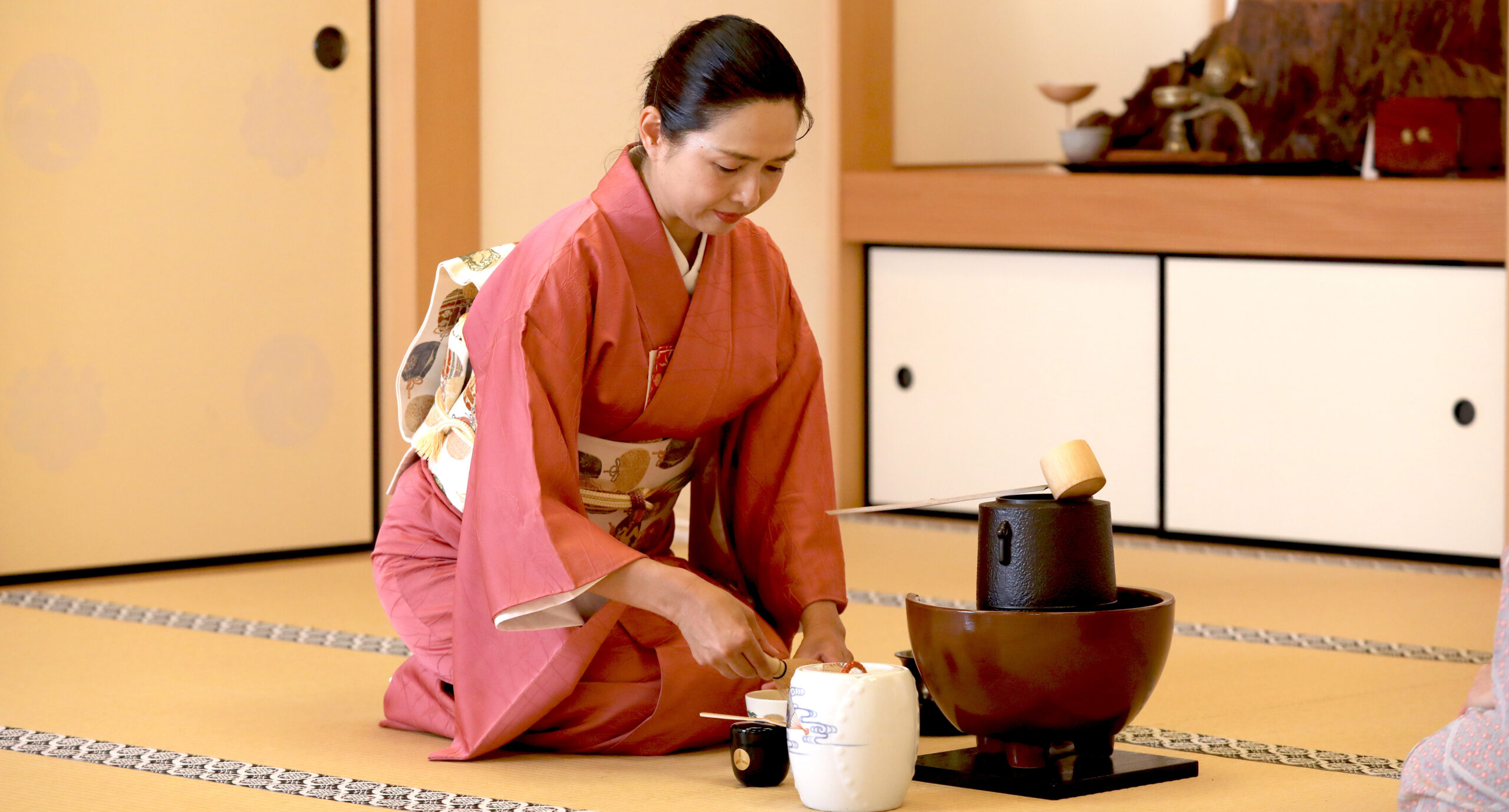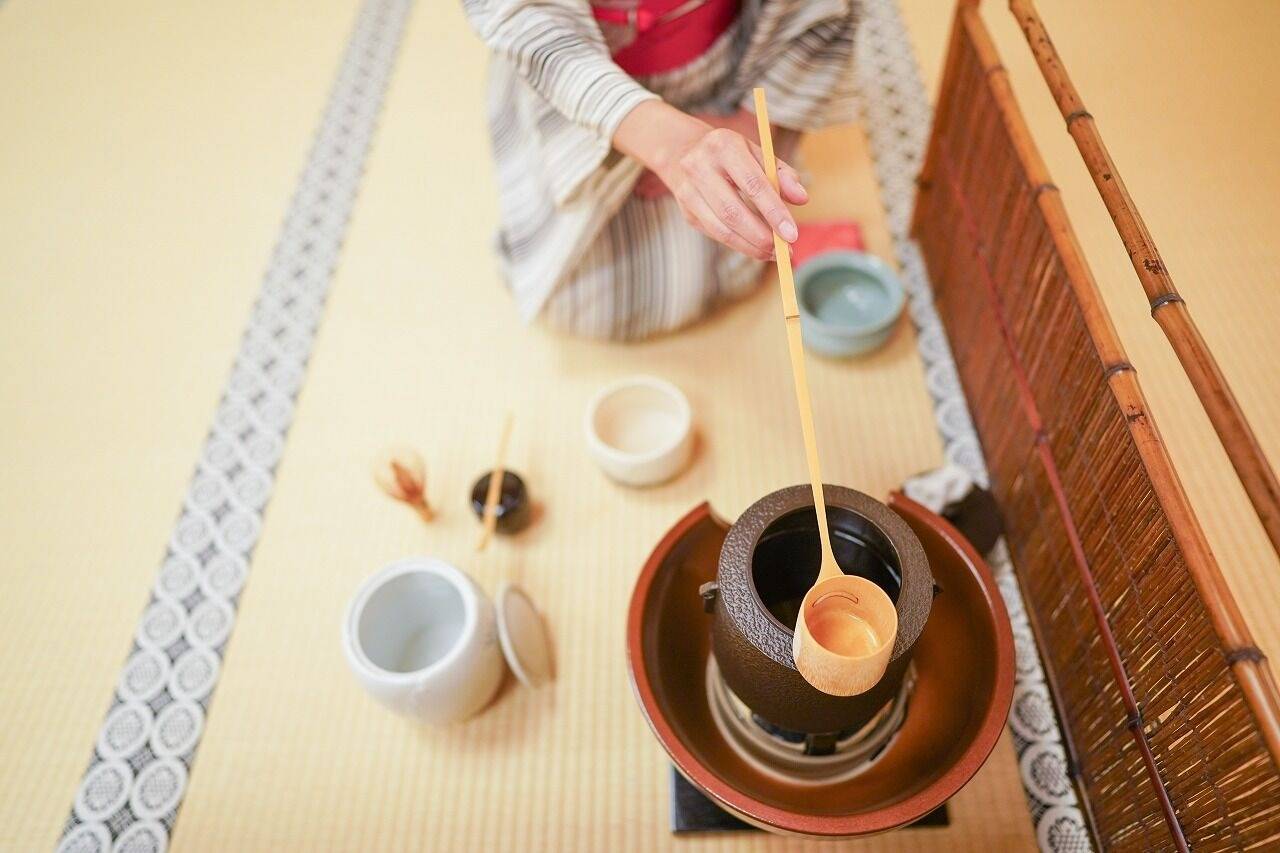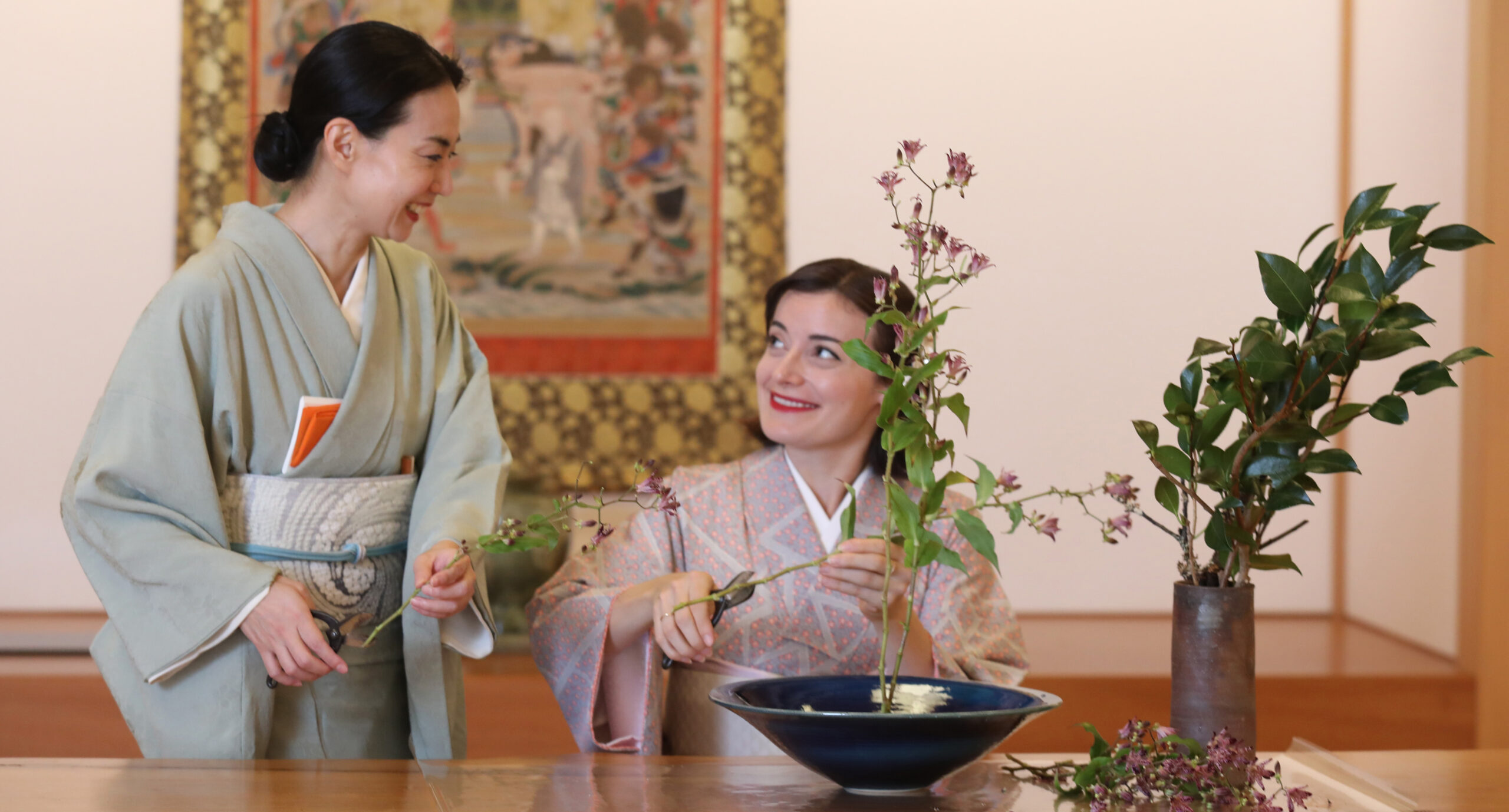The Rikyu Hyakushu (利休百首), or “Rikyu’s Hundred Verses,” is a collection of 100 short poems attributed to Sen no Rikyu, the founder of the Japanese tea ceremony (茶道, sadō). These poems serve as guidance for tea practitioners, offering insight into the philosophy, etiquette, and spiritual aspects of the tea ceremony. Rather than focusing solely on the technical aspects of tea preparation, the Rikyu Hyakushu emphasizes the deeper principles of humility, mindfulness, and self-discipline.
-“その道に入らんと思ふ心こそ 我身ながらの師匠なりけれ”(The desire to walk the path is the true teacher of oneself.)
This poem conveys the message that one’s own goals and determination are the most important guides on the path of learning, serving as the driving force for personal growth. It reflects Rikyu’s philosophy that emphasizes self-improvement and inner development.
-“ならひつつ見てこそ習えならばずに よしあしいふは愚かなりけり”(One learns truly by practicing and observing.
To judge what is good or bad without learning is foolish.)
This poem emphasizes the importance of learning. It conveys the message that true understanding comes from actual experience and observation, and that it is foolish to judge the merits of something without having learned about it.
-“こころざし深き人にはいくたびも あはれみ深く奥ぞ教ふる”(For those with deep resolve, the profound secrets are taught again and again with great compassion.)
This poem means that for a disciple with deep resolve, the master will compassionately teach the secrets of the art time and time again. It reflects the importance of the spirit of the tea ceremony and the master-disciple relationship.
-“はぢをすて人に物とひ習ふべし 是ぞ上手の基なりける”
Do not feel ashamed to ask questions of your master or seniors about what you do not know. If you endure a moment of embarrassment, it will bring you lifelong benefits.
-“上手には好きと器用と功積むと この三つそろふ人ぞ能くしる”(To become truly skilled, one must possess a love for the art, dexterity, and the ability to accumulate hard work. Only those who have these three qualities can truly understand.)
To become skilled, one must have love, dexterity, and hard work. Only those with all three truly understand.
-”点前には弱みを捨ててただ強くされど風俗いやしきを去れ”
The temae (tea ceremony) should not be performed with excessive force, nor should it be too forceful. The ideal temae strikes a balance, neither weak nor strong, but achieving a harmonious middle ground.
-”点前には強みばかりを思ふなよ強くは弱く軽く重かれ”(When carrying something light, do so with the mindset of carrying something heavy)
when carrying something heavy, do so with the mindset of carrying something light” expresses an attitude or mindset towards various situations.In essence, the phrase emphasizes the importance of having the appropriate mindset regardless of the circumstances.
-“何にても道具扱ふ度ごとに取る手は軽く置く手重かれ”
Each time you handle a tool, take it with a light touch and place it down with a firm hand. When releasing your hand from the tool, do not pull it away swiftly, but gently and slowly let go.
-“何にても置き付けかへる手離れは恋しき人にわかるると知れ”
When placing something down, do not let go quickly;
release it slowly and with lingering hesitation, as if parting from a beloved.
-“点前こそ薄茶にあれと聞くものを相になせし人は誤り”
The way of serving tea, especially with thin tea, is often regarded as fundamental, and those who neglect this principle are mistaken. (This suggests that the basic techniques are crucial, and the skill in serving tea is most clearly reflected in the simple preparation of thin tea.)”
-“濃茶には手前を捨てて一筋に服の加減と息をもらすな”
In making thick tea (koicha), do not worry about the skill or elegance of your tea-making procedure. Instead, focus on preparing the tea with care, adjusting to the right consistency. Pay attention to your posture, engage your core, and regulate your breathing.
-“濃茶には湯加減熱く服は尚ほ泡無きやうに固まりもなく”
“For thick tea (koicha), the water should be hotter, and before adding the tea, make sure to wipe the bowl well. The initial kneading should be thorough. If there are bubbles or clumps, it means it has not been kneaded sufficiently.”
-“とにかくに服の加減を覚ゆるは濃茶度々点てて能く知れ”
“To thoroughly understand how to adjust the strength of koicha (thick tea), one must often prepare it and gain skill through repeated practice.”
-“よそにては茶を汲みて後茶碗にて茶碗の縁を心して打て”
”In tea ceremony, the way tea is poured and the timing of pouring are important. It also emphasizes the necessity of paying attention to details and acting with care in the practice of tea ceremony. When striking the tea scoop or tapping the lid, one must act carefully to avoid accidentally damaging the tea bowl or causing any disruption in the movements.”
-“中継は胴を横手にかきて取れ茶杓は直におくものぞかし”
“During the process, place your hand on the side of the container as it has a deep lid, and when placing the tea scoop, do so directly and straight. Use the tools in a manner appropriate to their design.”
”It emphasizes the importance of handling the tools appropriately and adhering to the etiquette of the tea ceremony.”
-“棗には蓋半月に手をかけて茶杓は円く置くとこそ知れ”
”When handling the natsume (tea caddy), place the lid with your hand in a crescent shape, and lay the chashaku (tea scoop) down in a circular manner. This way, it will be stable and visually pleasing.”
-“薄茶入蒔絵彫物文字あらば順逆覚え扱ふとしれ”
“If there are engraved characters on a lacquered tea container, you should learn to handle them in the correct order, whether forward or backward.”
This refers to the proper way to handle tea ceremony utensils, particularly when they have markings or designs. The idea is that you should be respectful and mindful of the markings and know how to properly handle the items.
-“肩衝は中次とまた同じ事底に指をばかけぬとぞ知れ”
This phrase expresses an important guideline for handling a tea container called katatsuki in the practice of tea ceremony.
It advises, “When handling a katatsuki, treat it in the same way as a nakatsugi container, holding it from the side of the body and avoiding placing fingers underneath.”
This guideline emphasizes the importance of not holding the tea container from the bottom, as this manner of handling conveys respect for the vessel, enhances its visual presentation, and ensures it is handled with care and safety.
-“文琳や茄子丸壷大海は底に指をばかけてこそ面持て”
When handling a Bunrin, Nasu, Marutsubo, or Taikai tea container, place your fingers under the base to hold it securely.
This text provides guidance on how to handle tea utensils in the context of the Japanese tea ceremony. “Bunrin,” “Nasu,” “Marutsubo,” and “Taikai” are shapes of tea caddies (containers for powdered green tea) used in tea ceremonies. Although their shapes differ, they share a common characteristic: all are valuable tea utensils that should be handled with care.
This is not merely a set of instructions on how to hold these items but also conveys a fundamental principle for learning how to embody the spirit of the tea ceremony through respectful handling of its utensils.

